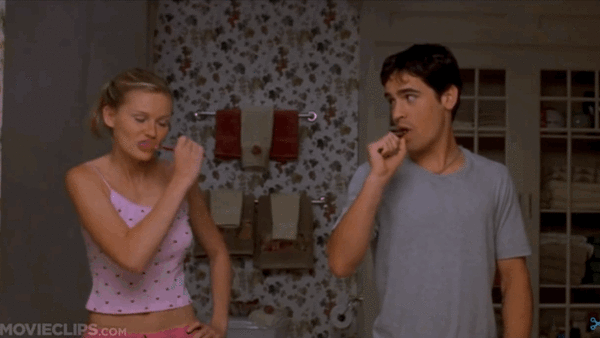Don't Put This In Your Mouth
You will brush your teeth as long as you are alive-50 to 80 years. Have you paid attention to your oral hygiene?
Truth about toothpaste

In your childhood, you have been told to brush twice a day, use mouthwashes, visit the dentist once every 6 months to be free from cavities. If toothpaste magically cleans your teeth. Why is it that it says "harmful to swallow" at the back?
Everything we put in our mouth enters our body through the mouth mucous membrane of the gums into the bloodstream or even through open wounds in your mouth(ulcer). Then why do they say harmful to swallow?
That's because toothpaste companies use harmful chemicals that shouldn't be used to clean such delicate tissue.
1. Fluoride: Contradictory to what the advertisement says "You don't get tooth decay due to fluoride deficiency". It impairs gums, reducing enzyme activity in the mouth.
2. Propylene glycol(PG): Some toothpaste use Propylene glycol. It is made out of fossil fuels during the oil-refining process. Even though the amount of PG is very less, daily use can increase acidity in your mouth.
3. Sodium Lauryl sulfate(SLS): The reason you have constant mouth ulcers can be due to this. That's because SLS is used to wash your clothes. It irritates skin, eyes, mouth, and lungs.
4. Artificial colors and preservatives: Artificial color has no use in toothpaste except it is a marketing gimmick used to attract customers.
5. Triclosan: It is already a chemical that is known to kill the aquatic ecosystem. In humans, it affects hormonal regulation. A survey done by U.S. Centers for Disease Control and Prevention (CDC) found triclosan in the urine of participants because it is not water-soluble.
6. Artificial sweetener: Toothpaste use sorbitol, and xylitol which enhances the flavor of toothpaste. Even though toothpaste manufacturers claim that xylitol is beneficial for the teeth and gums—killing bacteria, alkalinizing the saliva. There is no scientific research to prove that.
The truth about toothbrushes:
After a few months of use, you might notice that your toothbrush has flattened out. Companies claim it is a sign to change your toothbrush. But the most shocking fact is your toothbrush should remain the same even after a few months. If it flattens out, it means that you have used too much pressure while brushing your teeth.
Oral hygiene seems boring. We brush mindlessly, busy planning for a day or watching the phone. Use a dry brush rather than a wet brush. Gentle brushing with a dry toothbrush can remove more plaque and bacteria than a wet toothbrush.
Did you know that a person is not allowed to donate blood for forty-eight hours after a dental cleaning because the blood is likely to be full of bacteria? Professional dental cleanings remove tartar deposits on the teeth but cannot stop the regrowth of acid-loving bacteria. Nor will a cleaning strengthen or protect teeth. After a deep scaling by a hygienist, oral bacteria are dislodged and flow into the bloodstream, challenging the immune system. The body responds to this perceived attack by releasing white blood cells to combat the invading microbes, and one of the results is systemic inflammation. Also, many harmful bacteria stay in the saliva and will reestablish themselves on the teeth and in the bloodstream.
Feeding the mouth:
Along with brushing, oral hygiene depends on the food you eat. Processed foods, sugary drinks, stress affects oral flow.
Babies are born without teeth. It grows after its birth. So nutrition during breastfeeding is equally important for babies' teeth. During breastfeeding, the baby's mouth is small for nipples to suck milk, yet it is very important for jaw development.
Taking care of teeth:

1. Salt rinse:
After meals, it is not ideal to brush your teeth because your mouth will be acidic after you eat. Toothpaste is basic. So use hot water and salt rinse to remove any food particles sticking in-between the teeth and it also makes the mouth alkaline.
2. Scraping tongue:
Use a copper tongue scraper or gently rub the toothbrush on your tongue to remove the white coating. This white coating is an indication of your digestive fire. Scraping helps the food taste better and absorb nutrition.
3. Oil pulling:
It is an ancient ayurvedic method to heal bleeding gums, whiten teeth. Different oils are used for different purposes. For example, clove oil is used to remove cavities. Take a spoon full of oil and swirl it in your mouth for 5 to 10 mins and spit it out. Don't swallow it.



Comments
Post a Comment